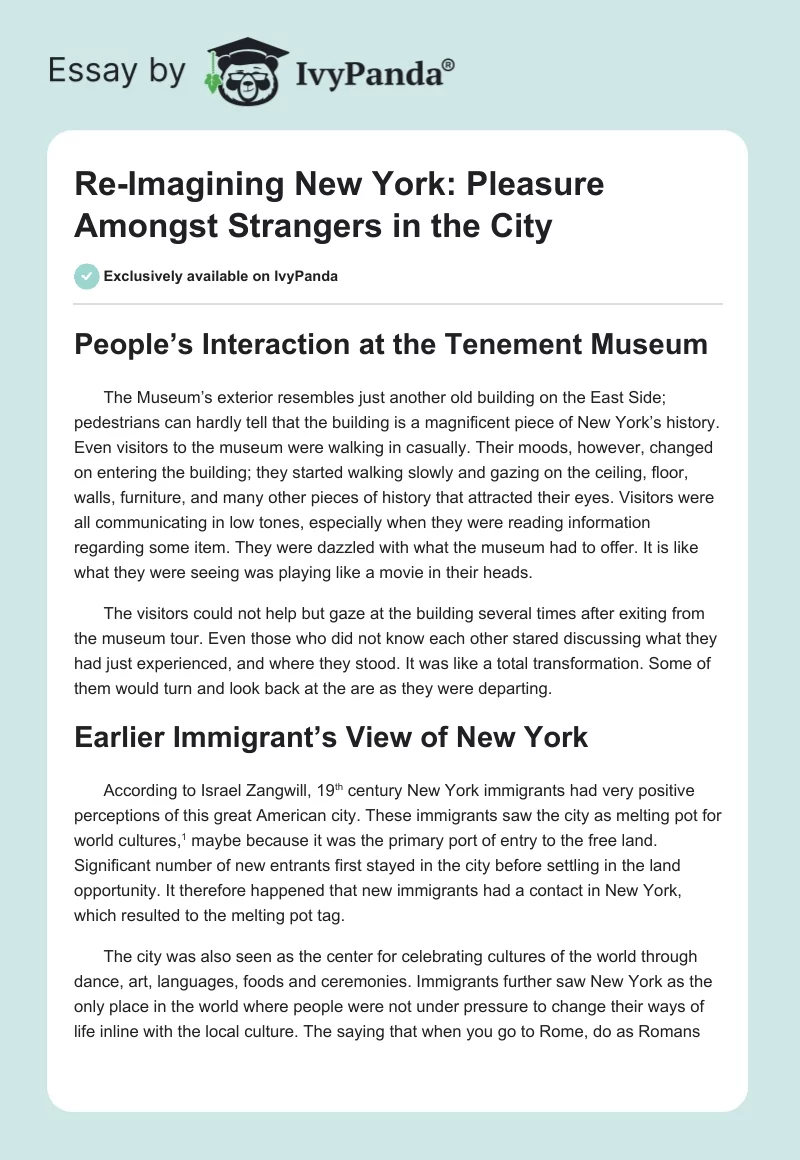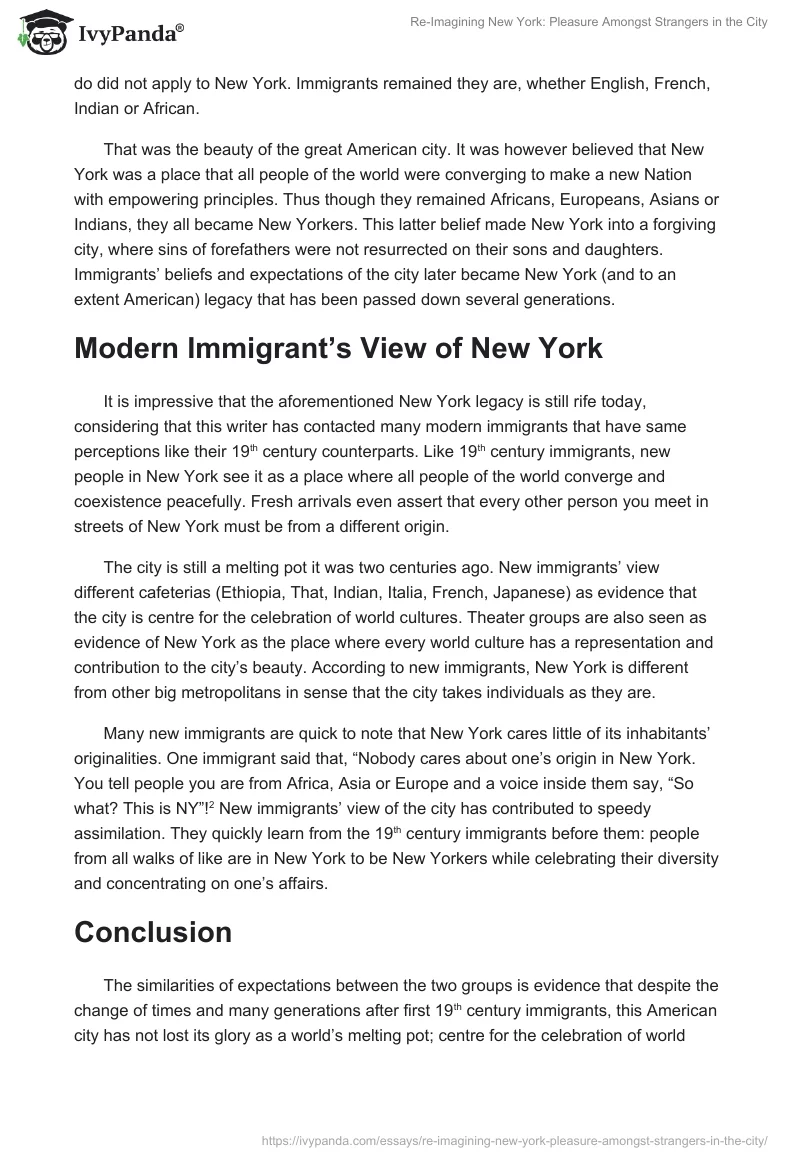People’s Interaction at the Tenement Museum
The Museum’s exterior resembles just another old building on the East Side; pedestrians can hardly tell that the building is a magnificent piece of New York’s history. Even visitors to the museum were walking in casually. Their moods, however, changed on entering the building; they started walking slowly and gazing on the ceiling, floor, walls, furniture, and many other pieces of history that attracted their eyes. Visitors were all communicating in low tones, especially when they were reading information regarding some item. They were dazzled with what the museum had to offer. It is like what they were seeing was playing like a movie in their heads.
The visitors could not help but gaze at the building several times after exiting from the museum tour. Even those who did not know each other stared discussing what they had just experienced, and where they stood. It was like a total transformation. Some of them would turn and look back at the are as they were departing.
Earlier Immigrant’s View of New York
According to Israel Zangwill, 19th century New York immigrants had very positive perceptions of this great American city. These immigrants saw the city as melting pot for world cultures, maybe because it was the primary port of entry to the free land. Significant number of new entrants first stayed in the city before settling in the land opportunity. It therefore happened that new immigrants had a contact in New York, which resulted to the melting pot tag.
The city was also seen as the center for celebrating cultures of the world through dance, art, languages, foods and ceremonies. Immigrants further saw New York as the only place in the world where people were not under pressure to change their ways of life inline with the local culture. The saying that when you go to Rome, do as Romans do did not apply to New York. Immigrants remained they are, whether English, French, Indian or African.
That was the beauty of the great American city. It was however believed that New York was a place that all people of the world were converging to make a new Nation with empowering principles. Thus though they remained Africans, Europeans, Asians or Indians, they all became New Yorkers. This latter belief made New York into a forgiving city, where sins of forefathers were not resurrected on their sons and daughters. Immigrants’ beliefs and expectations of the city later became New York (and to an extent American) legacy that has been passed down several generations.
Modern Immigrant’s View of New York
It is impressive that the aforementioned New York legacy is still rife today, considering that this writer has contacted many modern immigrants that have same perceptions like their 19th century counterparts. Like 19th century immigrants, new people in New York see it as a place where all people of the world converge and coexistence peacefully. Fresh arrivals even assert that every other person you meet in streets of New York must be from a different origin.
The city is still a melting pot it was two centuries ago. New immigrants’ view different cafeterias (Ethiopia, That, Indian, Italia, French, Japanese) as evidence that the city is centre for the celebration of world cultures. Theater groups are also seen as evidence of New York as the place where every world culture has a representation and contribution to the city’s beauty. According to new immigrants, New York is different from other big metropolitans in sense that the city takes individuals as they are.
Many new immigrants are quick to note that New York cares little of its inhabitants’ originalities. One immigrant said that, “Nobody cares about one’s origin in New York. You tell people you are from Africa, Asia or Europe and a voice inside them say, “So what? This is NY”! New immigrants’ view of the city has contributed to speedy assimilation. They quickly learn from the 19th century immigrants before them: people from all walks of like are in New York to be New Yorkers while celebrating their diversity and concentrating on one’s affairs.
Conclusion
The similarities of expectations between the two groups is evidence that despite the change of times and many generations after first 19th century immigrants, this American city has not lost its glory as a world’s melting pot; centre for the celebration of world cultures; a forgiving city; a tolerant city; and a city where people from all over the world come to be New Yorkers.
Bibliography
Jacoby, Tamar. “Reinventing the Melting Pot: The New Immigrants and What It Means To Be American.” 2002. Web.


